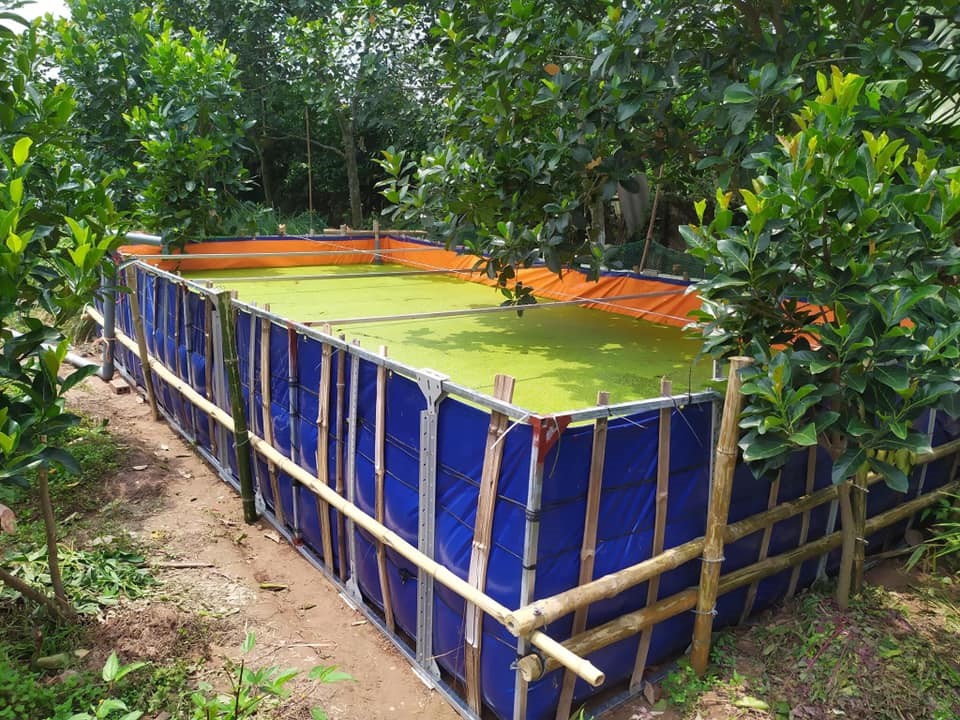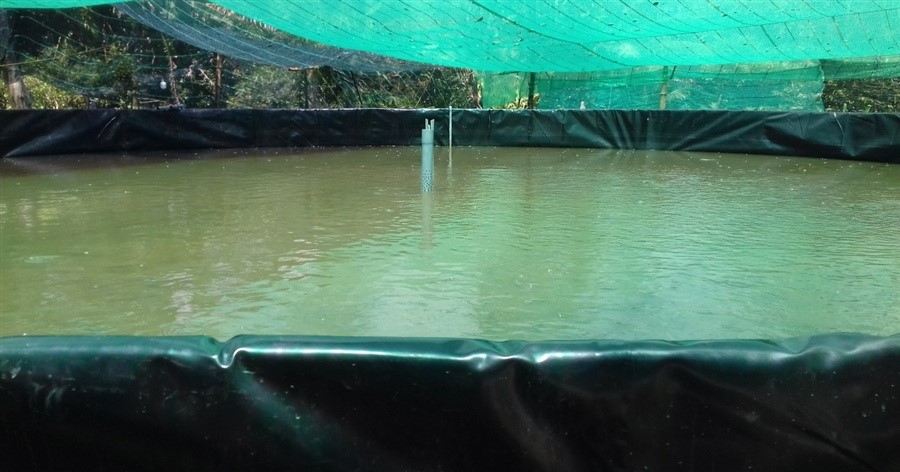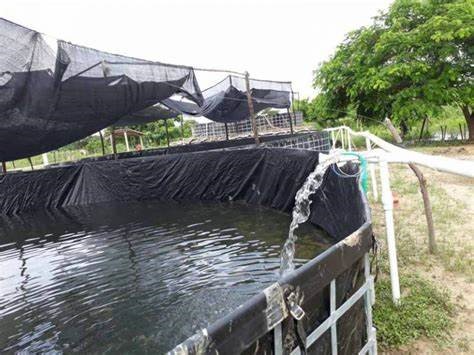Many farmers prefer tarpaulin-lined ponds over concrete tanks for fish farming. So, what are the advantages of tarpaulin ponds? And what are the requirements for building such ponds to raise fish, shrimp, eels, snails, and frogs?
Constructing tarpaulin-lined ponds for aquaculture (fish, eels, shrimp, snails, frogs) has become a growing trend among both small-scale and large-scale farmers, with proven success. With relatively low initial investment, farmers can quickly set up a tarpaulin pond and stock aquatic species right away. Compared with pond excavation, installation and preparation are less complicated. So, how can tarpaulin ponds be built for maximum efficiency and cost savings?
1. ADVANTAGES OF TARPAULIN-LINED PONDS
Tarpaulin ponds are favored over concrete tanks because of lower cost and easier setup:
– Feed optimization: Better utilization of feed, minimizing waste and avoiding overfeeding.
– Improved aquaculture performance: Prevents waterlogging, maintains water quality, provides effective disease control, and limits algae growth and other environmental impacts.
– Easy pond hygiene: Faster cleaning time, allows for more production cycles, and increases profit margins.
– Flexible site selection: Choose a location with convenient water supply and drainage, spacious and well-ventilated, preferably with shade trees.
– Customizable size and shape: Depending on production goals, ponds can be small for easy management or large for intensive farming. Common designs are circular or rectangular. Minimum recommended dimensions: 1–1.5 m in width and depth.
– Construction types: Options include excavated earth ponds, cement-based ponds, or above-ground ponds with supporting stakes.
– Tarpaulin material: Choose affordable commercial tarpaulin or specialized waterproof liners. Low-quality tarpaulin has shorter lifespan and risks leakage, whereas high-quality tarpaulin (properly installed) can last 5–7 years, up to 10 years.
– Supporting structures: Iron or wooden stakes are required to secure the tarpaulin. Above-ground ponds require more stakes depending on pond size. Metal frames or ready-made tarpaulin pond kits are also available on the market.
 Image of tarpaulin-lined ponds for frog
Image of tarpaulin-lined ponds for frog
2. NOTES ON TARPAULIN POND INSTALLATION
Earth-Based Ponds
– Sunken ponds: After excavation, compact the soil. For soft ground, add a sand layer and level it. Remove sharp objects (stones, branches, scrap metal) before laying the tarpaulin. Avoid stepping on the liner with shoes or smoking during installation to prevent damage.
– Above-ground ponds: Similarly, compact the soil base, remove sharp objects, and carefully level the surface before laying the liner.
Before securing the liner: ensure the ground is clean, flat, without stagnant water, and firmly compacted.
Cement-Based Ponds
– Smooth and dry the cement surface. Spread a sand layer to prevent friction that may tear or wear out the liner.
– Construct a drainage system: pond bottom should slope toward the outlet. Install a filter mesh at the drainage pipe to prevent fish loss. Overflow pipes with filter screens are required for excess water inflow (e.g., heavy rain).
– During installation: stretch the liner properly, fold corners neatly to avoid wrinkling, ensuring durability and aesthetics.
– Protective roofing: Install asbestos cement sheets or thatched roofs to reduce environmental impacts. Surround the pond with netting to prevent fish from jumping out (important for high-jumping species).

3. FISH CARE AND MANAGEMENT
Water Source
– From lakes/ponds: Filter water through mesh before filling. Disinfect with A BENZACID 800 .
– Tap/clean water: Can be directly filled into ponds.
– Water quality parameters: Monitor dissolved oxygen (DO), pH, H₂S depending on species. Apply lime to stabilize pH.
– Probiotics application: Periodically use A BIO L to treat pond bottoms, reduce biofilm on tarpaulin, and decompose organic waste and leftover feed, maintaining stable water quality.

Stocking Fingerlings
– Purchase from reputable hatcheries with traceable origin. Before stocking, bathe fingerlings in A–OXYLINE 200S (Oxytetracycline-based) to prevent bacterial infections.
– Consider stocking seasons and regional climate for each species to ensure optimal growth.
Feeding
– Provide adequate feed according to growth stages. Observe feeding behavior to detect abnormalities early.
– Supplement diets with Vitamin C (e.g., A VITA C MAX) periodically to boost immunity and accelerate growth.
Harvesting
Harvesting is simple in tarpaulin ponds – entire stock can be collected efficiently. This setup also reduces downtime between production cycles, improving economic returns.
With these practical guidelines for constructing tarpaulin-lined ponds for fish, shrimp, eels, snails, and frogs, you can achieve efficient aquaculture practices while maximizing economic benefits.
